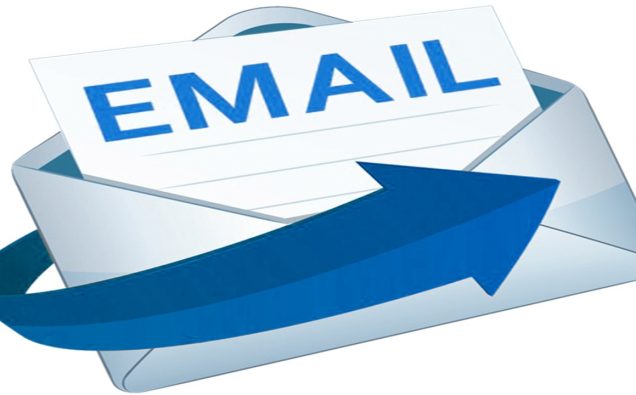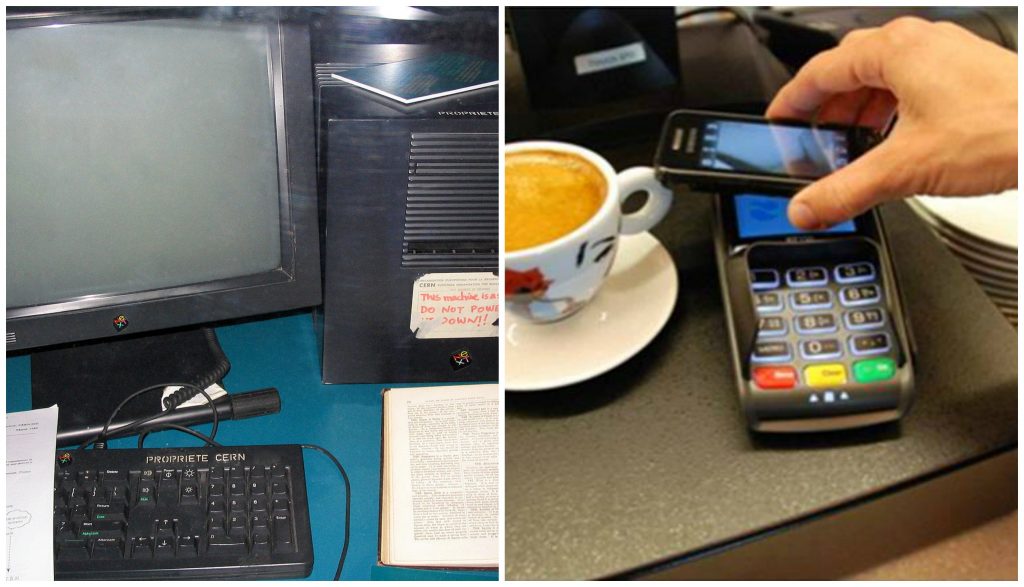
Photo: Email bdtbt.png/Wikipedia
Email is consuming our time, confusing both our personal and professional relationships, commandeering our attention at work, and over-complicating our lives. Here are some suggestions to create more harmony.
When I was a supervisor, my favorite phone-call was the one that went: “Hi Mark, did you get my email?” to which my confused response was often: “which one?”
Bless the days of the movie “You’ve Got Mail”, in which correspondence was exchanged between two honest if confused and complicated people in a time of over-excitement about a new technological break-through.
These days, email conflicts, consumes, and combusts communications too often.
A professional colleague speaks of many employees in her organization who prefer to spend the day sending and receiving emails, rather than advancing assignments, understanding and learning from their colleagues, and generally getting their work done in a friendly and efficient manner. Via email, she says, you never have to suffer the potentially empowerment-surrendering experience of walking down the hallway to be honest face-to-face.
Responsibility for advancing huge projects can be shifted with the mere forwarding of a PDF. Anger or frustration, no matter how misplaced, can be expressed from behind the safe if temporary haven of a large and expensive employer-provided electronic screen, and shared around – if desired – with like-minded frustratees. Points can be scored with the anticipation of an emailed response which will likely only serve to escalate the issue, involving an expanding number of copy-lined staff, thus consuming more precious time and thought.
Insecure staff may feel they need written proof that they have, indeed, informed somebody of something, lest anyone questions their response times, and/or communication skills.
Worst of all, email written with innuendo, aggression, assertion, or allegation, frequently started needless battles, but very rarely solved them.
God gave the lucky among us voices – we are choosing to replace them with keyboards.
There is now proof that this daily cycle of passive-aggressive typed mayhem is slowing organizations’ productivity, creating unnecessary and prolonged internal conflicts, and is – most importantly – highly addictive. And then there is the mind-clutter, which prompts me to confess what prompted this outburst: as of tonight, I have 26,348 items in my Gmail Inbox. On a crusade to banish them last week, I discovered there is no quick-fix Gmail tool for mass deletion.
A 2016 study of SaneBox’s internal data suggests that in the average inbox only 38% of emails are “relevant”. A 2012 study from The McKinsey Global Institute suggested the average employee spent 13 hours a week reading and responding to email, consuming an average of 28% of their time at work. A study by UC Irvine and the U.S. Army cut off email access to 13 workers for a week, attached heart rate monitors to them, and found hugely reduced stress levels.
In 2011 Atos, Europe’s largest IT company, announced a “zero” email policy by 2013. In its place, they established their own social media network among employees, after finding managers were spending up to 20 hours a week answering emails. They established training courses for managers to operate in a “zero-email environment”. By the end of 2013 an independent study suggested overall email had been reduced by 60%, from an average of 100 email messages per week per employee to less than 40.
According to Forbes Magazine, Atos’s employees said they felt more productive and collaborative. The company’s operating margin increased from 6.5% to 7.5% in 2013, earnings per share rose by more than 50%, and administrative costs declined from 13% to 10%.
Assuming not all organizations would want to go that far, here are some suggestions for “managing” email flow.
- Talk to your people about the best ways to communicate in different situations. When it comes to solving complex issues, face-to-face meetings are still the best. Contrary to popular culture in many organizations, these don’t always need to last an hour.
- Meet with staff and encourage them to talk to each other where possible. Set boundaries for work emails – they should only be for the exchange of information, not to score points or argue positions. Establish workshops to teach employees how to choose the best method of communication for different issues, projects, and information flows.
- Encourage thoughtful, accurate and informative subject-lines to avoid inbox confusion, and urge users to be professional and to-the-point.
- Set regular daily time-slots for checking email – don’t sit across it constantly, because you will inevitably be distracted. This will encourage others to do the same.
- Make sure spam filters are working effectively for yourself and your organization. Better to have someone taking out the trash for you.
- Create subject folders and file away all important ongoing emails at the end of each day. Religiously dump everything irrelevant, or you’ll wind up with an inbox like mine.
If you are in an organization where there is lots of needless or troublesome email, consider whether your staff need more opportunities to express themselves and their ideas in weekly forums, meetings, or other channels. It may be a sign of frustration. Increasingly, the voiceless are going into print, for better or worse.
















